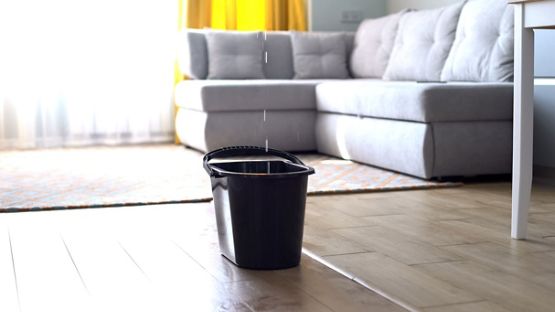As the temperatures drop and the days grow shorter, home heating becomes essential for comfort and safety. However, improper use of heating equipment can lead to serious fire risks. So, to ensure a cozy and secure environment for your family, it’s important to understand heating-related fire risks and take protective measures to keep warm while staying safe.
Key takeaways
- Heating equipment can be a leading cause of home fires (Health Canada). Knowing the specific fire hazards associated with your home heating method is key to preventing accidents and ensuring safety
- By sticking to maintenance schedules and following safe usage practices for your heating methods, you’ll be best positioned to avoid any worst-case scenarios
- Nevertheless, being prepared for worst-case scenarios, including having comprehensive insurance coverage, is the best way to protect your home and loved ones
Understanding heating-related fire risks
Different types of heating can pose unique hazards. By understanding these risks, you can take proactive steps to ensure your home remains warm and safe throughout the winter months.
Space heaters
Space heaters are a common and convenient source secondary home heating but can pose significant fire risks if not used properly. Many space heaters are prone to overheating, especially if they are old, malfunctioning or not designed for continuous use. Moreover, if placed too close, they can easily ignite nearby flammable materials such as paper, fabric or furniture. This risk is heightened if the heater is not positioned on a flat, stable surface. Fire losses happen most when these devices are left unattended so always remember to unplug when not in use.
Wood-burning fireplaces and stoves
Fireplaces and wood stoves offer cozy warmth but require regular maintenance to prevent fire hazards. One major concern is the build-up of creosote, a highly flammable substance that accumulates in the chimney and can ignite if not regularly cleaned. Additionally, improper disposal of ashes, which can remain hot for days, may lead to fires if they are not completely cooled before removal.
Central heating systems
Central heating systems can also be a fire hazard if not properly maintained. These systems rely on air filters to remove dust and debris. If filters become clogged or dirty, airflow is restricted, which can cause the system to overheat. Overheating can lead to fire hazards, especially if dust or debris accumulates around heating elements.
Electrical heating devices
Prolonged use or setting electric blankets or other devices to a high heat setting can cause overheating. If the blanket does not have an automatic shut-off feature, this can lead to excessive heat buildup and increase the risk of fire. As devices like electric blankets age, the risk of malfunctions and home heating equipment fires increases. Upgrading to newer models with improved safety features can mitigate this risk.
Gas fireplaces
Gas fireplaces provide efficient and convenient warmth but come with their own set of safety considerations. One of the most significant risks associated with gas fireplaces is the potential for gas leaks. Leaks can occur due to faulty connections, damaged gas lines or malfunctioning valves. If ignited by a spark or flame, gas leaks can lead to fire or even explosion.
Gas fireplaces also require proper venting to expel combustion gases safely. Blocked or obstructed vents can cause dangerous gases to build up within the home, potentially leading to a fire or explosion if the gas accumulates and ignites.
Six home heating safety tips
Now that we understand the dangers posed by various home heating sources, let’s look at ways to avoid these risks. The good news is that by following these key safety tips, you can help ensure that your heating methods operate safely and effectively throughout the winter season.
1. Regularly inspect your heating systems
To ensure your heating systems are running safely, schedule regular inspections by professionals. This includes:
- Cleaning: Have fireplaces and chimneys cleaned to remove soot and creosote buildup, which can lead to chimney fires
- Servicing: Ensure heating systems, such as furnaces and heat pumps, are serviced to keep them running efficiently and safely
- Hazard checks: Inspect ductwork and flues for potential hazards, such as leaks or blockages, that could affect your system's performance and safety
2. Use portable space heaters safely
When using a portable space heater, follow these safety practices:
- Placement: Place portable heaters on a flat, stable surface and keep them at least one metre (three feet) away from flammable materials like paper, fabric like drapery and furniture. Maintain a one-metre “kid-free zone” around space heaters.
- Electrical connections: Avoid using extension cords with space heaters; plug them directly into a wall outlet to prevent overheating.
- Operation: Turn portable heaters off when leaving the room or going to bed to reduce the risk of overheating and potential fires. Always use the right kind of fuel for fuel-burning space heaters (as specified by the manufacturer).
3. Practice fireplace and wood stove safety
To ensure the safe operation of fireplaces and wood stoves:
- Screens: Use fireplace screens to prevent sparks from escaping and starting accidental fires. Maintain a one-metre space around fireplaces, to ensure kids, animals and other flammable materials are kept away from open flames.
- Safe ash disposal: Properly dispose of ashes by allowing them to cool completely before placing them in a metal container away from combustible materials.
- Chimney maintenance: Have your chimney cleaned and inspected annually to ensure it is free from obstructions and buildup that could lead to dangerous chimney fires.
4. Maintain your central heating system
For safe and efficient operation of central heating equipment:
- Filter maintenance: Change furnace filters regularly to maintain proper airflow and prevent dust buildup that can cause overheating
- Ventilation: Ensure that all vents and registers are clear and unobstructed to allow for proper air circulation
- Electrical safety: Avoid overloading electrical circuits connected to your heating system and contact a professional immediately if you notice unusual noises or malfunctions
5. Practice general electrical safety
To prevent electrical fires and hazards:
- Inspection: Regularly inspect cords and plugs of electrical heating devices like electric blankets for any signs of damage, such as fraying or exposed wires
- Replacement: Replace any faulty or damaged equipment immediately to prevent potential fires
- Certification: Only purchase electrical heating devices that have been tested for safety by recognized certification bodies to ensure they meet safety standards
6. Maintain your gas fireplace
Proper maintenance of gas fireplaces is essential for safe operation. It includes:
- Regular inspections: Schedule annual inspections by a qualified technician to check for gas leaks, faulty ignition systems and proper venting
- Cleaning: Keep the glass doors and vents clean to ensure proper combustion and prevent dangerous gas buildup
- Ventilation: Ensure that the venting system is unobstructed and functioning correctly to safely expel combustion gases and prevent hazardous fumes from entering your home
- Component checks: Have a qualified professional inspect and maintain the gas lines, burners and pilot lights to ensure they are in good working condition and free from leaks
Other prevention and emergency preparation
Preparing your home and family for emergencies like home fires can make a significant difference in ensuring safety during unexpected events. Implementing preventative measures not only helps protect your home but also ensures that everyone in your household knows what to do in case of an emergency. Here are key steps to enhance your fire and safety preparedness:
Install smoke alarms and carbon monoxide detectors
Smoke detectors and carbon monoxide alarms are important for early warning in case of fire or gas leaks. Install detectors in every sleeping area and on every floor of your home. Test smoke alarms monthly and change the batteries at least once a year.
Create a fire escape plan
Develop a fire and emergency escape plan that includes multiple exit routes and a designated meeting place outside. Practice the plan regularly with all household members to ensure everyone knows what to do in case of an emergency. Keep all exits clear of obstructions.
Prepare a grab-and-go bag
A grab-and-go bag is an essential part of emergency preparedness. Pack a bag with important items that you and your family might need if you need to evacuate quickly. Keep the bag in a readily accessible location so that everyone in the household knows where it is and can quickly grab it if needed. Regularly review and update the contents to ensure they remain current and relevant.
Ensure safety and security with comprehensive coverage
We all want a warm and cosy winter, full of seasonal cheer. Keeping your home heating systems safe is essential for preventing fires and home fire deaths and injuries. Regular maintenance, safe usage practices and preventative measures can significantly reduce the risk of home heating fires.
In addition to these precautions, it's important to review your home insurance policy to ensure you have adequate coverage for heating-related issues. In Canada, home and tenant insurance policies include fire coverage as a standard feature, providing an added layer of protection and peace of mind.
Stay vigilant this winter and make sure your insurance coverage is up-to-date to safeguard your home and loved ones against unforeseen events.













